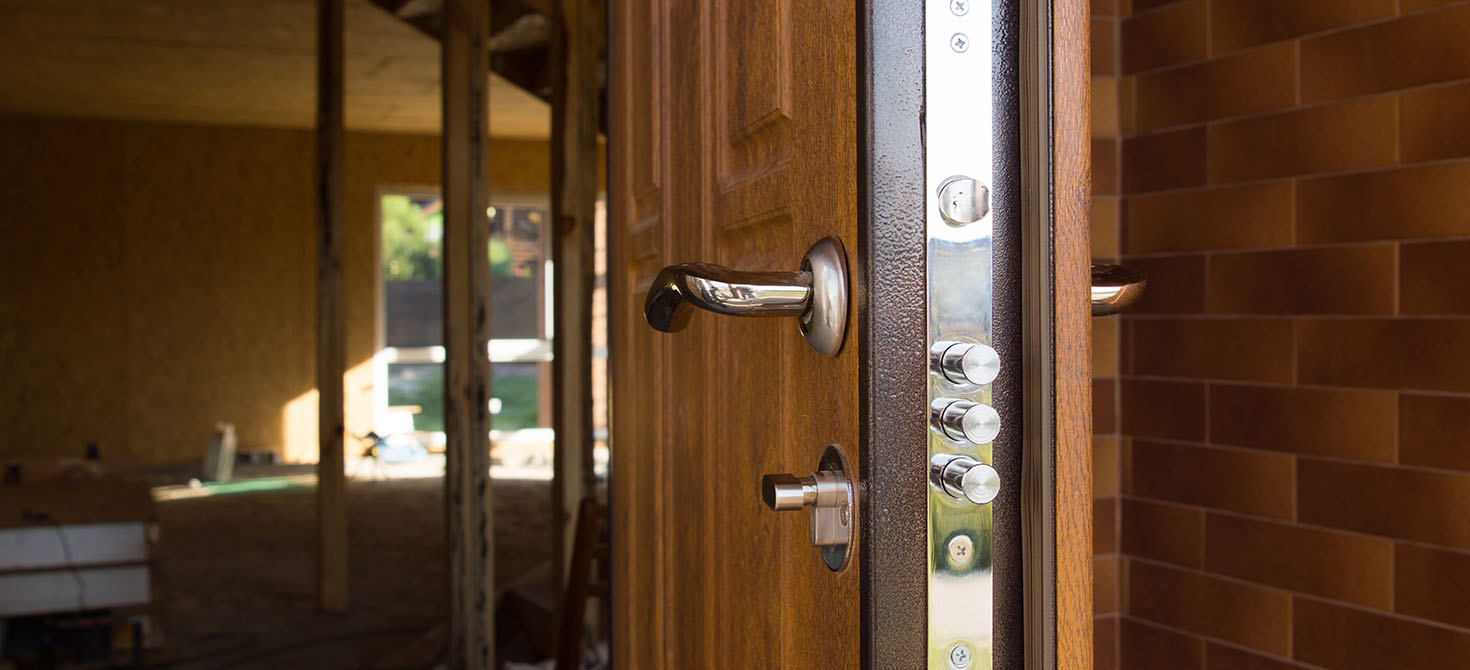- Furnishing trends
- 0 likes
- 1962 views

Today we are going to talk to you about security doors: what are the characteristics and advantages of these doors? Unfortunately, burglaries have now become very common in the largest Italian, European and international cities. For this reason, more and more people are deciding to protect their home or work environments with a security door. Here is everything you need to know about these important protection elements.
Index
Armoured doors, what they are
Armoured doors are structures with a steel frame that is 2, 3, 4 or 5 millimetres thick. The door leaf of these doors is made from a double sheet of steel - between 1 and 1.5 millimetres thick. The lock, latches and hinges are then screwed into the structure.
What security standards do security doors have to meet? And how should a security door be chosen on the basis of its security and ability to resist break-ins and break-in attempts? To answer these questions, it should be noted that security doors must meet specific regulatory requirements: they must comply with the required thermal transmittance values, as well as acoustic insulation and resistance to forced entry and attempted theft.
As well as preventing break-ins and attempts to break in, security doors must also be able to improve the thermal comfort of a house by insulating it from the outside. From an acoustic point of view, these elements must also be able to insulate the interior.
Armoured doors: security standards
In order to determine the security level of security doors, specific standards have been defined - in numerical order - which define the level of vulnerability:
- Classes 1 and 2: Doors that are most vulnerable to external attack and forced entry. These doors can be attacked with common tools - even improvised ones. Due to their low security standard, these doors are suitable for installation in cellars and warehouses;
- Class 3: to be defined as 'armoured', a door must at least fall into this category, which can be achieved by means of professional tests and certifications, which guarantee these elements a fair standard of security and impenetrability. Class 3 doors guarantee resistance to attempts at break-ins with more elaborate tools, such as screwdrivers and crowbars;
- Classes 4 and 5: an even higher level of security - doors that can withstand theft and burglary, even attempted by professionals. These classes give armoured doors particular strength and security. The installation of a class 5 door is compulsory for certain activities considered to be at risk, such as security institutes and jewellers;
- Class 6: maximum security level of a security door. Class 6: the highest level of security for an armoured door. Doors of this standard are able to resist attempts to break in with saws and drills and are usually installed in banks, military environments and jewellery stores.
Armoured doors for outdoors
If the security door frame is in direct contact with the outside environment, the door must be fitted with weatherproof panels. These panels are usually made of marine plywood, with a PVC or aluminium finish, so as to ensure that the colour holds for several years.

Armoured glass doors
Security doors with shatterproof glass are now available on the market. These doors offer a high standard of security, thanks to an excellent level of resistance to impact and deliberate blows. These doors offer a high standard of security, thanks to their high level of resistance to impact and intentional knocks.
These doors can also be fully customised to suit your technical and aesthetic needs and requirements.
Armoured wooden doors
Armoured wooden doors represent the most classic and traditional furnishing: there are many models available on the market that differ according to the different types of workmanship (solid wood, honeycomb or listels). If solid wood is used, it is usually veneered or stratified, in order to better maintain its stability over the years. On the other hand, some armoured doors are made of honeycomb wood, a honeycomb structure characterised by the typical sandwich shape, which is lightened on the inside.
Armoured doors, prices
Finally, we come to the market prices of security doors. The costs are influenced by the great variety of products - made from different materials - available on the market. Buying an armoured door means making a lasting investment, to the benefit of personal security and that of your family. For this reason, it is necessary to choose these products with the utmost care and attention, avoiding the search for savings by purchasing doors that do not meet good quality standards. Here are some important elements to refer to when choosing a quality security door - which will obviously affect costs:
- number of door leaves: doors with only one leaf are cheaper;
- type of security door: you will have to choose between an interior or an exterior door; exterior doors are generally more expensive - because they have to meet thermal and acoustic insulation requirements;
- door dimensions: the standard dimensions of an armoured door are 80 to 90 centimetres wide and 200 to 210 centimetres high. If you choose a larger door, costs will increase by approximately 10 to 30%;
- security standard of the security door: from class 1 to class 6 - as explained in the previous paragraphs;
- presence of accessories and other components: digital peepholes and services specially designed for the elderly, disabled people or pets;
- choice of panels: model, colour and presence of possible decorations.
Having said this, it is possible to quantify the price of an armoured door, based on the characteristics described above. In general terms, we can say that an approximate estimate of the cost of an armoured door can determine an expenditure of between 1,000 and 5,000 euros.
